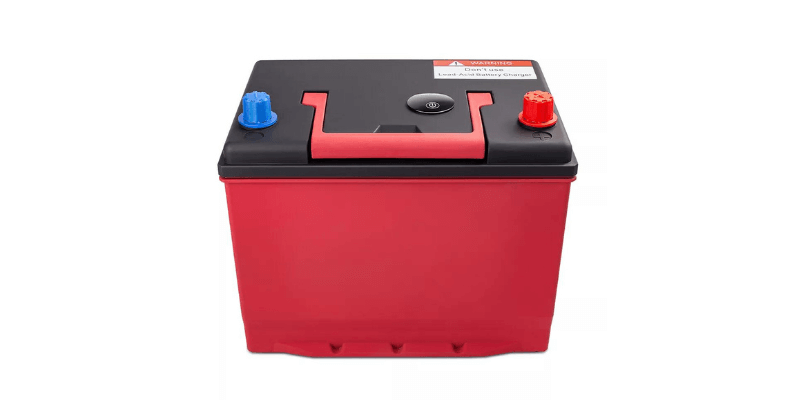Å håndtere større batterier i bobiler og båter kan være skremmende for de uinnvidde. En viktig faktor å vurdere er gruppestørrelse. Men hva betyr gruppestørrelse, og hvorfor er gruppen 24 -batteriet så populært blant båtfolk og rvers? La oss utforske.
Hva betyr gruppestørrelse på et batteri?
Gruppestørrelsen på et batteri refererer til det Standardiserte dimensjoner definert av Battery Council International (BCI). Dette sikrer kompatibilitet av brett, klemmer og tilbehør blant batterier med samme betegnelse.
Å kjenne riktig gruppestørrelse er viktig for riktig batteribytte og elektriske tilkoblinger. Du kan vanligvis finne den i kjøretøyets bruksanvisning eller på batteriets etikett.

Hva er et gruppe 24 -batteri?
Et gruppe 24-batteri er et oppladbart batteri i standardstørrelse (L 260mm x W 173mm x H 225mm) som ofte brukes i kjøretøy, sikkerhetskopieringssystemer og medisinsk utstyr.
Den primært designet som dype syklusbatterier, og har underkategorier som 24F, 24H, 24R og 24T med små dimensjonsforskjeller. Å velge riktig type er viktig på grunn av disse variasjonene.

Hvilke kjøretøy bruker gruppe 24 batterier?
Gruppe 24-batterier brukes hovedsakelig i kjøretøy som trenger ekstra strøm utover startbatteriet, for eksempel semi-trucker, bobiler, busser, trailere og båter.
De fungerer ofte som husbatterier. En populær applikasjon driver en kajakk -trollingsmotor for fiske eller cruising.

Hva er fordelene til et gruppe 24 -batteri?
Gruppe 24-batterier er allsidige dype syklusbatterier som tilbyr en langvarig og stabil strømforsyning, ideelle for bobiler, marine bruk og mobile kraftsystemer.
Litt mindre enn 100AH -batterier er de kompakte og enkle å installere i trange mellomrom for applikasjoner som trenger mindre lagret strøm.

Hva er ulemper med et gruppe 24 -batteri?
Gruppe 24 batterier har kortere kjøretid enn større modeller på grunn av størrelsen.
Imidlertid er de kostnadseffektive og passer i forskjellige rom.
Er det litium-ion-gruppe 24 batterier?
Ja, oppgradering til litiumgruppe 24 batterier unngår vedlikehold.
Litiumbatterier er lettere og vedlikeholdsfrie, noe som gjør dem til en utmerket alternativ til tradisjonelle bly-syre-batterier, spesielt for vektfølsomme applikasjoner som bobil eller båter.

Hva er forskjellen mellom et gruppe 24 og gruppe 34 batteri?
Gruppe 24 og gruppe 34 har samme lengde (260 mm) og bredde (173 mm), men gruppe 34 er kortere i høyden (200 mm).
Kan jeg bytte ut batteri med forskjellige gruppestørrelser?
Du kan bruke forskjellige batterigruppetyper for den samme applikasjonen, men et erstatningsbatteri må oppfylle følgende kriterier.
- Det skal passe tett – Større eller mindre batterier vil kreve betydelige modifikasjoner.
- Forsikre deg om at spennings- og kapasiteten samsvarer når du bruker en annen gruppestørrelse.
Hvis disse forholdene er oppfylt, er det enkelt å bytte gruppestørrelser.

Hvordan kan jeg se om gruppen min 24 batteri må byttes ut?
Tegn på batteriproblemer inkluderer sprukne eller svulmende tilfeller, terminal korrosjon, manglende evne til å holde en lading og startvansker. En belastningstester eller multimeter kan evaluere sveivforsterkere og reserverekapasitet.
Konklusjon
Mange bobiler, båter og andre kjøretøyer bruker gruppe 24 batterier på grunn av deres allsidighet og kraft. Husk denne informasjonen for ditt neste batterivalg eller erstatning for å unngå å føle deg maktesløs.
Relatert artikkel:

